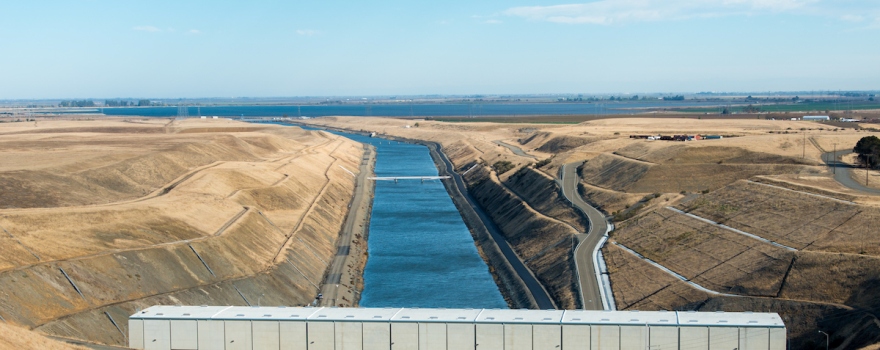Draft EIR released for long-term operations of the State Water Project
From the Department of Water Resources:
Moving to strengthen safeguards for fish and expand science-based decision making, the Department of Water Resources (DWR) took formal steps today to begin environmental review of long-term operations of the State Water Project (SWP).
The action enables California’s water project operations to avoid relying on proposed federal biological opinions announced last month to achieve environmental approval to operate consistent with state law. Instead, DWR will seek approval from the California Department of Fish and Wildlife (CDFW) to operate the SWP in a way that improves protections for fish and complies with the California Endangered Species Act (CESA).
In a key step toward that goal, DWR today issued a draft document prepared under the California Environmental Quality Act (CEQA) that identifies potential operational changes to protect species and manage the SWP based on real-time conditions in the Delta ecosystem, including additional flows dedicated to the environment.
DWR’s draft Environmental Impact Report (EIR) draws on a decade of science and a quantitative analysis of best-available data on flows, modeling, habitat and climate change impacts. The draft EIR is available here and the appendices can be found here.
“This draft points to a more sophisticated and nimble way to manage the State Water Project to improve our ability to protect species and operate more flexibly. This is essential in order to capture water when it’s available and leave more water when and where fish need it,” said DWR Director Karla A. Nemeth.
The SWP captures and stores water that originates in the Sierra Nevada and delivers it to 27 million Californians in the Bay Area, Central California and Southern California.
DWR’s draft EIR is separate from the proposed biological opinions issued by federal agencies on October 22 for long-term operation of the federal CVP and the SWP. Earlier this year, out of concern for the scientific rigor of the federal process, DWR indicated it would pursue its own environmental review and permit process to ensure protection of endangered species under state law.
Concurrent with the environmental review under CEQA, DWR is developing an application for a permit from CDFW for long-term SWP operations under CESA. CDFW will determine requirements for the permit in the coming months, with a specific focus on mitigating impacts of SWP operations on longfin smelt, Delta smelt, winter-run and spring-run Chinook salmon.
The draft EIR assesses impacts of proposed project operations, a “no project” alternative that reflects current operating rules, three alternatives that provide fresh water flows in the spring and summer, and an alternative that uses physical barriers and other deterrents to keep fish away from the SWP pumps.
Historically, DWR had relied on federal Biological Opinions to cover the SWP under the federal ESA, with a consistency determination provided by CDFW. Securing a separate permit under CESA provides flexibility for CDFW to consider amendments to the permit based on better scientific understanding as part of the adaptive management program, without relying on changes to be made to the federal Biological Opinions. It also provides CESA authorization for SWP regardless of any potential changes in federal law.
DWR’s draft proposal differs from the federal Biological Opinions in several key ways:
- It improves species protection by vesting authority in CDFW to stop operational changes if it determines they will violate CESA standards.
- It includes multiple alternatives that provide a block of environmental water that can be used to offset pumping impacts in the Delta, with adjustments made over time as new information is learned.
- It provides clear direction on when Delta pumping can be increased during storm events and caps the amount that exports can be increased in those events.
- It includes updated modeling and quantitative analyses to support habitat actions in summer and fall to benefit Delta smelt.
- It includes specific protections for longfin smelt, a protected species under CESA, and a commitment to implementing a longfin smelt science plan.
- It does not seek to increase SWP exports.
DWR’s draft EIR will be available for public comment through January 6, 2020. DWR anticipates completing a final document in early 2020, with a permit from CDFW expected to follow.
RELATED: Will DWR Embrace or Reject the Trump Biops?, blog post from Doug Obegi at the NRDC
Related content …
——————————————–
Sign up for daily email service and you’ll always be one of the first to know!
- Sign up for daily emails and get all the Notebook’s aggregated and original water news content delivered to your email box by 9AM. Breaking news alerts like this one, too. Sign me up!
 Maven’s Notebook
Maven’s Notebook
constantly watching over the world of California water


